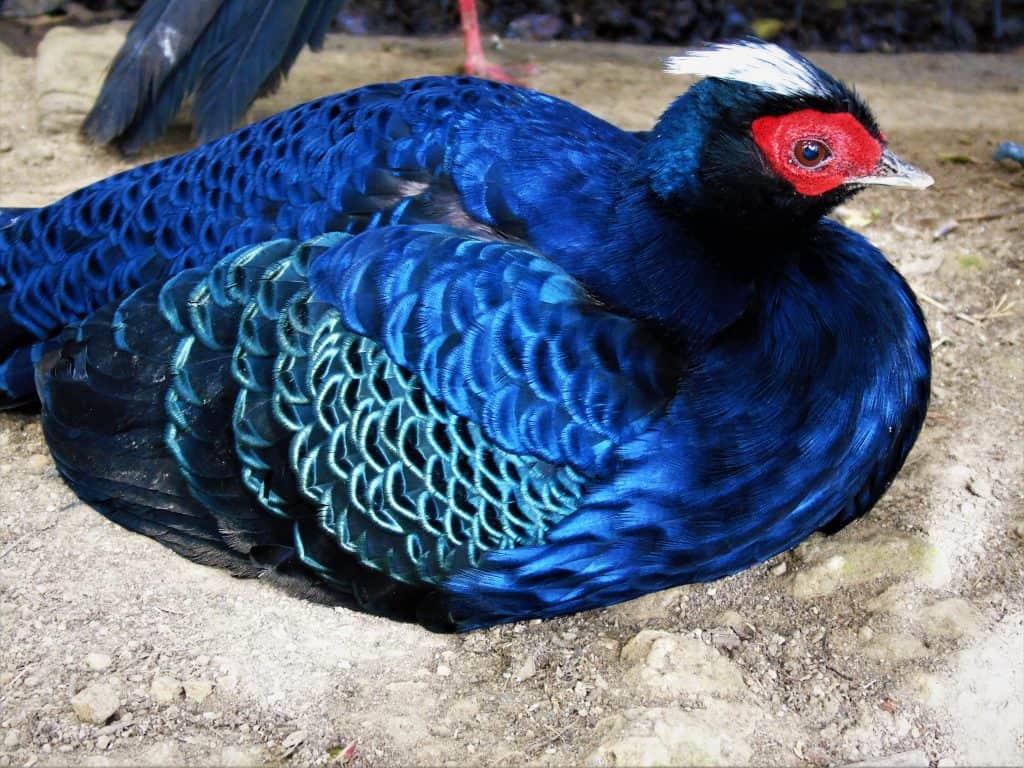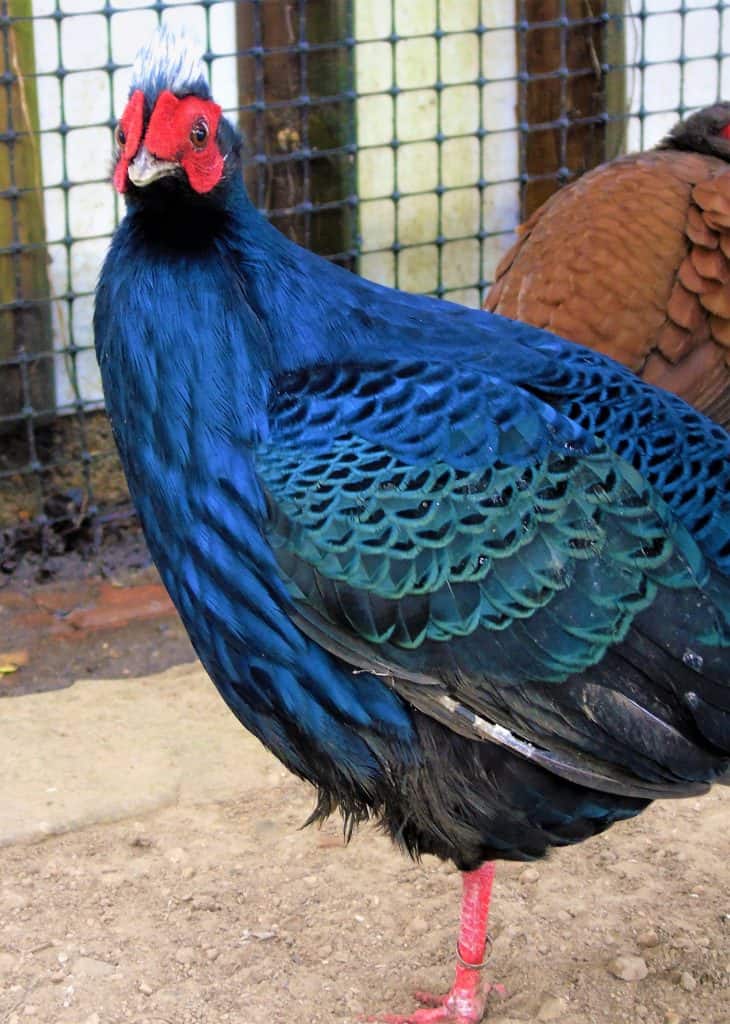It’s that time of year where us birders get very excited that rarities may show up as our wild birds undertake their autumn migrations. This got me thinking about our own rarities here at the park. So, I would like to talk about our very own treasure on the bird’s section, our Vietnamese Pheasants (Lophura edwardsi). We have two Vietnam Pheasants here at the park, Sheldon who lives in our Tropical House and his brother Leonard. The boys don’t get on very well now they’re grown up, so Leonard is currently in an off-show area.
If you’re not familiar with the species, they really are GORGEOUS when you get up close for a better look. Males have an intense dark blue plumage, with the lighter iridescent edges on the upper parts forming intricate crescent patterns, giving the illusion of scales. Atop their head they have a crest of white feathers and accompanying bright red wattles to match their red legs.

We do not have any females at the park anymore. However, they are much drabber in appearance, having a uniform chestnut brown plumage all over most of their bodies.

When I first started working at Wingham Wildlife Park, this species was named the “Edwards Pheasant”. They were considered to be a different species from the Vietnamese Pheasant because they have white central tail feathers. Whereas, only the form with dark central tail feathers was known as the “Vietnamese Pheasant”. However, they are now considered one species, with the Vietnam Pheasant having different variations, which I’ll explain a little further down in this blog.

Where in the World?
Vietnam pheasants are endemic to the Central region of Vietnam. They’re known historically from four provinces (Ha Tinh, Quang Binh, Quang Tri and Thua Thien Hue) where they used to be described locally as fairly common. However, the last confirmed record was in 2000, when one male was confiscated from a hunter.

Their habitat in the wild consists of areas of Vietnamese mountain forests with thick undergrowth and liana covered hillsides. The few records of this species in the 1990’s came from lowland areas which had been selectively logged. Its historical range is now almost completely stripped of primary forest. This is through a combination of herbicide spraying during the Vietnam war, logging and clearance for agriculture. Remaining fragments of forest are now under intense pressure.
Status in the Wild
Consequently, the Vietnam Pheasant is now classified as Critically Endangered on the IUCN Redlist as the lack of recent records suggests that the remaining wild population is probably exceptionally small and extremely fragmented. This is why we see such differences in the plumage between the different variations. When the gene pool becomes smaller and smaller, becoming more cut off from each other, you start to see local mutations eventually leading to speciation over time.
Any surviving subpopulations of Vietnam pheasant are most likely declining and tiny. Vietnam pheasants are thought to only occur in only 5-10 locations and with the absence of better data it is estimated that there may be as few as 50-249 individuals left in the wild. It has even been suggested that the species may have already become extinct in the wild in the early 2000’s. Declines have been driven by high levels of hunting pressure from collectors and various forest-products alongside forest deterioration. Sadly, trapping is indiscriminate and even though Vietnam pheasants may not be the target species they are still affected by snaring causing local extinctions.
Conservation Endeavours
Suggested plans to help conserve this species in the wild include two proposed nature reserves. A site support group has already been established for Quang Tri with plans for a second at Huong Hoa. But realistically, more camera-trapping and remote surveys of remaining forest fragments are needed. This would help to identify and protect any remaining populations in Vietnam. Specially trained dogs are also in the plans to help locate this species again in the wild. Captive populations of Vietnam Pheasants are thankfully fairly large. More than 1000 captive individuals and offer a lifeline for this species’ survival. Careful management of this captive population will be key if we need to prepare suitable individuals for reintroduction.
Our boys have had genetic testing done and sadly they aren’t a good match for any females- at the moment. Easily overlooked in the Tropical House, especially when you have Gok the Blue Crowned Pigeon vying for everyone’s attention, our Vietnam Pheasants are one of the rarest animals we have in the entire collection of animals at Wingham Wildlife Park. So even though Sheldon is quite shy, the next time you spot him in our Tropical House take a minute to appreciate just how special this little treasure is.



